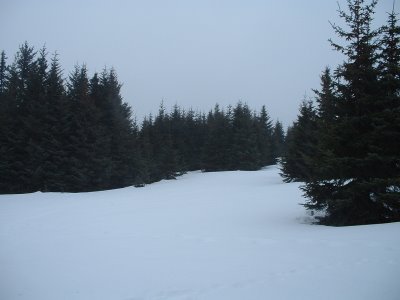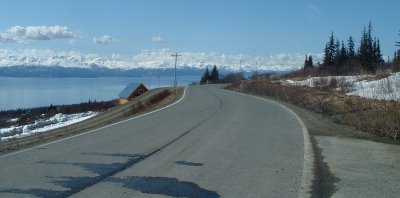 Sometimes, I truly believe that airline travel is the bane of modern civilization. Well, that and cell phones. How does something so unquestionably convenient become so inexplicably tedious? I've made the drive from Salt Lake to Alaska ... twice. Once I did Salt Lake to New York on a bike. I'd take these things any day over an equivalent flight.
Sometimes, I truly believe that airline travel is the bane of modern civilization. Well, that and cell phones. How does something so unquestionably convenient become so inexplicably tedious? I've made the drive from Salt Lake to Alaska ... twice. Once I did Salt Lake to New York on a bike. I'd take these things any day over an equivalent flight.Everyone has a "worst flight ever" story. I have several. Here's my latest:
I begin at 1:30 p.m. Mountain Standard Time, drive to the airport, leave a borrowed car in short term parking and check in. I leave the ground at 3:20, heading - confusingly - south for Los Angeles. I receive a packet of salted cardboard and 3 ounces of Diet Coke. Late lunch.
I arrive at LAX at about 4:15 Pacific Standard Time and receive another boarding pass for a flight with a different airline on the other side of the terminal. Scheduled departure: 9:30 p.m. I make the 15-minute walk and realize that I still have five hours to kill. So I step into the hot and humid afternoon and begin search for escape. I make my way to four dead-ends and three increasingly suspicious airport cops before I find what I believe is the only pedestrian exit at LAX. I walk in a nearly straight line down Century Boulevard for an hour and a half without ever completely leaving the wasteland of airport sprawl - hotels, synchronous palm trees and endless parking lots. Every restaurant, every storefront is nestled in unwelcoming concrete fortresses. By the time I make it back to the airport, the bottom of my feet burn with sidewalk blisters and it's time to catch my next flight.
Flight 8252 Los Angeles to Anchorage leaves at 9:30 PST. It begins with snack service. Flattened granola bar and 3 more ounces of Diet Coke. I pull out the cheese and crackers my dad packed for me and suck down a few Jolly Ranchers. At 10:30 PST I drift to sleep. At 10:35, the turbulence hits.
You know what's the most unnerving sound in the world? Those seatbelt-sign dings in a plane that is jolting violently back and forth. You know what's the second most unnerving sound in the world? Broadcast reassurances from "your captain speaking." You know what travels the least well in the stomach of someone prone to motionsickness in a rickety plane dancing through the night sky? Diet Coke and Jolly Ranchers.
I can't sleep, so I watch the blackness roll by. Around 1:00 a.m. Alaska Standard Time, a soft light reappears deep on the horizon. I can't tell if we're approaching sunrise or catching sunset. It doesn't matter, because it makes me feel better.
At 1:45 a.m. AST I land and make my way to yet another airline. My flight is set to depart at 6:35, so I pull out my sleeping bag and sweater and sprawl on the floor. Another passenger, bound for Kodiak, parks himself close by and commences with a virtual opus of snoring. The airline persistently, and loudly, broadcasts the time every half hour. I'm awake for every one of these announcements.
At 6:50 a.m. AST the plane pulls up. It looks like it just stumbled in from a bear viewing trip - stunted body, pointed nose, wing props spinning in an uncomfortable idle. The plane, in fact, seats all of 10. Only five board. The captain looks back from the open cockpit and rambles off the federal regulation rules. We take off into the morning fog. I scan the broken clouds for quick glimpses of the barren landscape I left behind while pouring through the last unread words of my tattered, soaked Sunday LA Times.
At 7:45 AST we land. I gather my 39-kg backpack (as weighed by Era Aviation) and head for work. I feel like 24 hours have passed. In fact, 20 have. There is no rest for the weary, no comfort for the economy traveler.
















